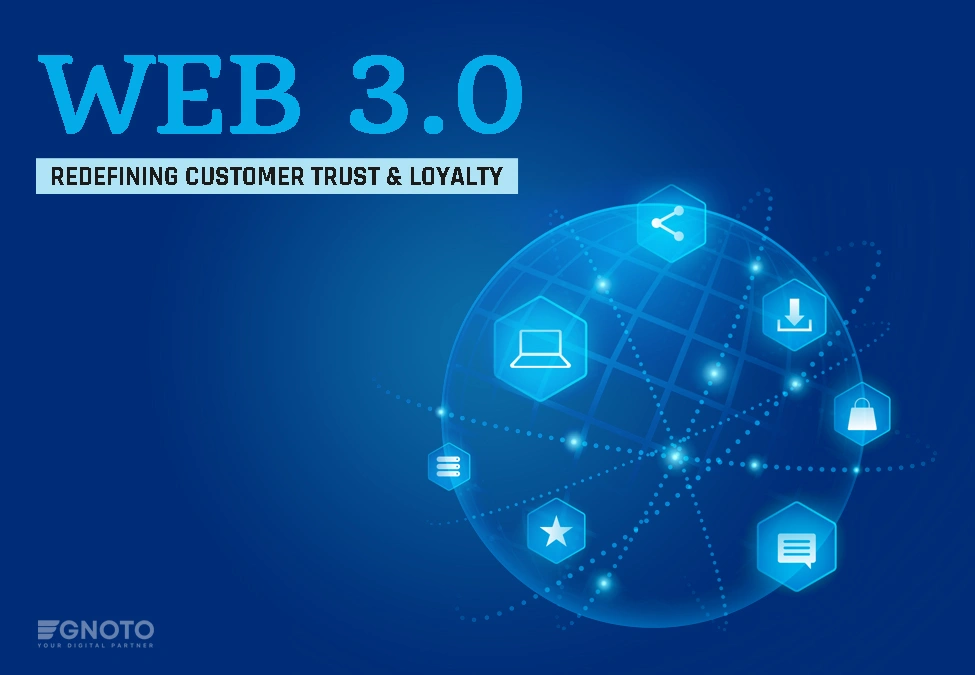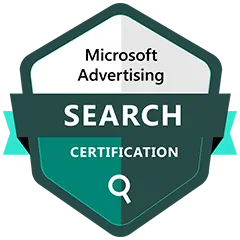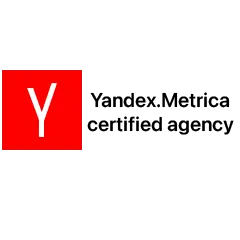Marketing has seen many waves of advancements, and the other one is web3. It will transform digital marketing strategies and ways businesses connect with customers. With this revolution, we are stepping into a decentralized, intelligent, and immersive world.
Remember the static sites where you could only read information without interaction? That was Web 1.0. It was the earliest version and then came Web 2.0, which introduced social media, user-generated content, and interactive websites.
But what does this Web 3.0 have to offer to digital marketers? Is this time for your marketing team to change their strategies? Is Web 3.0 a trend, or is it here to stay? We will answer all your questions and queries that will come to your mind when you use this version of internet marketing.
Ready to dive into the future of marketing?
What Is Web3 or Web 3.0?
Web 3.0 is the next generation of internet and web protocol. It will allow users to own, control, and monetize their data. They will not have to rely on big tech companies that centralize information. For a better understanding, learn about its previous versions below.
A Journey from Web 1.0 to 3.0:
- Web 1.0- A read-only web: It was the first generation of the internet. During this era, websites were simple but text-heavy and mostly read-only. There was no social media and user interaction.
- Web 2.0- A read-write web: What was not in Web 1.0 was introduced in this version. Internet marketing got exposure to interactive and social space. This version introduced user-generated content, social media platforms, and dynamic websites. You could read, write, and share your thoughts. Many businesses currently rely on this phase to boost their online presence.
- Web 3.0- A read-write-interact web: It is the next evolution of the internet. You will not have to rely on large companies that control data because Web 3.0 gives users ownership over their data. Decentralization is possible because of the blockchain technology used in this version. It enables secure and transparent transactions.
It ensures that no single entity controls the entire system; everyone should have control over the internet and the data concerning them.
Key Features of Web 3.0
Web 3.0 is also known as the semantic web because it introduces many features not present in the previous versions. These features will give your users a more secure, decentralized, and personalized online experience.
– Decentralization:
Decentralization means no single company or organization has control over data or internet. Web3 removes the need for central authorities or any mediator, which are mostly tech giants, to control data. It’s like distributing responsibilities rather than relying on one entity for everything. Users can own and control their own data. Do not worry, as this will be done with great privacy, security, and transparency.
– Semantic Web and AI:
This upcoming Internet version uses artificial intelligence and machine learning. It enables computers and humans to interact seamlessly. The semantic web uses metadata to provide context for the information. So, rather than just showing information based on keywords, it understands the meaning behind data and provides more personalized content. This relevant content makes the online experience more intuitive.
– Token-based Economy (Cryptocurrency and Blockchain technology)
Blockchain technology is at the heart of Web 3.0. This version makes transactions secure and transparent with the help of this technology. Digital tokens like Bitcoin and Ethereum will play a vital role in the Web3 economy. Cryptocurrencies are powered by blockchain, which enables a decentralized and secure way to transfer money. There will be no need for intermediaries after the implementation of Web 3.0. This token-based economy allows for peer-to-peer exchanges, microtransactions, and decentralized applications.
Here is a quick overview of blockchain technology so you can better understand the features and benefits Web 3.0 offers to digital marketers.
Blockchain is a type of record-keeping system that is called digital ledger. This ledger securely stores records or blocks (information) across a network of computers. These blocks contain transaction details like who sent money, to whom, and how much. It is almost impossible to alter a block. Once a new block is added to the blockchain, it’s there forever.
– Redefined data ownership:
This is the main feature that leads to transparency in data ownership. It allows you to control and manage your personal data. Blockchain technology helps individuals to decide who can control their data, who can access it, and for what purpose. Since blockchain technology is used here, it offers security, privacy, and transparency in data management. It reduces the risk of data breaches and misuse. It turns data into personal assets so users can use it their way.
– 3D virtual reality spaces:
Web 3.0 introduces immersive experiences with 3D Virtual Reality and Augmented Reality. These VR and AR technologies create interactive environments. Your users can get a more lifelike experience. E-commerce platforms can offer virtual stores where customers can walk through aisles and try on clothes in a virtual environment. VR and AR blur the line between the physical and digital worlds.
– Ubiquitous Connectivity:
Ubiquitous means what is present everywhere. This version of the internet is designed for constant and seamless connectivity across devices and platforms. Nowadays, many businesses use IoT devices, which ensure access to information and services anytime, anywhere, without barriers. You already use these devices, such as wearables and many other devices in smart homes. This ubiquitous connectivity keeps you connected all the time. It leads to a more fluid and interconnected digital environment.
– Smart Contracts:
Smart contracts are terms of the agreement written into line codes. It is human-understandable and automatically executed by computers. These are called “smart” because they are encrypted. Only the concerned person can access them. This feature of Web 3.0 will revolutionize industries like real estate, finance, health care, and manufacturing. It will remove the need for intermediaries and enable secure, transparent, and automatic agreements.
How Will Web 3.0 Impact Digital Marketing?
Since marketing is now based on online platforms, any changes that happen on the Internet directly impact digital marketing and businesses’ online presence. How Web 3.0 will shake the landscape of digital marketing.
Here is how Web3 marketing will change the dynamics of digital marketing.
– Marketers will need to be more creative:
Users will have to create more personalized and creative content. The traditional way of marketing will become completely obsolete. So, they must be updated with the latest trends and adapted quickly. Paid advertising will become less effective. Marketers will have to focus on ways that don’t sound like marketing. They can make it possible with the help of AI, AR, VR, and generative AI technologies. So, creativity will be the key to grabbing attention on the decentralized Internet.
– Data collection and privacy will change:
Web 3.0 can eliminate the reliance on centralized platforms like Google and Facebook for consumer data. Blockchain technology will enable you to control your data your way. Consumers can decide what information they want to share with businesses. So, marketers might have to rely on consumer permission for data collection. Marketers will need to be transparent about where they are going to use customer data.
– Content creators will have more autonomy:
Your data, your control. This concept will have more of a boost after the introduction of Web 3.0. Currently, social media platforms allow individual users to use them how they want without relying on mediators. Similarly, in the future, creators can monetize their work directly without relying on third-party platforms. With the advent of Web3, creators will have full autonomy over their content. Marketers can partner with content creators to increase their reach.
– More personalized marketing will be preferred:
AI powers Web3 immensely, so it will be easy for marketers to create hyper-personalized content for users. Machine learning algorithms will help analyze user intent and create content that best suits their needs. It can also analyze users’ preferences in real time. This way, marketers can create highly customized content, offers, and even product recommendations. It would be an amazing revolution for businesses that need hyper-personalization to attract customers.
– Immersive marketing in the metaverse will be used:
Metaverse is a key component of Web 3.0. It offers brands an interactive, 3D environment, allowing consumers to try their products virtually. Basically, consumers can use virtual stores to try products before buying them. It offers AR/VR experiences for more immersive environments and better shopping decisions. Companies help customers explore and interact with the products better before purchasing them in the real world.
– Overall user experience will enhance:
We all know that companies are in the race to offer better experiences to customers. Web3 will help them with seamless interactions and decentralized applications, also called dApps. Consumers will not have to navigate through ad-heavy websites. They can experience faster and enhanced engagement with the help of Web3 marketing. So, this version will improve users’ overall experience with the brand through various platforms and ways. It will also be a great move to decentralized marketing.
Challenges in Adopting Web 3.0 in Digital Marketing
Marketing has never been away from challenges, so this time as well. If you want to adapt to this latest version of the internet before your competitors, focus not only on benefits and implementation but also on challenges. It will not let you get frustrated soon while including web3 in your new marketing strategies.
– Lack of awareness:
Poor implementation of a new marketing strategy is often a result of a lack of awareness. Web3 is not a concept or way that can be implemented with the help of one person. You will need a team to cover different aspects of using this version for marketing. If your team is unaware of the terms decentralization, smart contracts, blockchain, and other related terms, it can be the biggest challenge to use web3 effectively for marketing.
– Data privacy:
As you read above, web3 offers decentralization, it allows users to have control of their data. In this case, collecting information from individual customers will be difficult. Without information, you can’t perform target marketing. So, the evolution of privacy laws and lack of clear regulations can pause a challenge in front of your team.
– High initial investment:
Transitioning to web3 will require you to invest in new software, blockchain integration, and experts, which can be costly. Likewise, you will need to train teams about the new marketing concepts. Only then can they adapt to the new concepts and use them for business growth. This will all need a high upfront investment.
– Performance issues:
No one can guarantee, even after providing training, that your team will work up to the mark. They can have performance issues and disparity in understanding. Moreover, if things don’t go well, it can create performance issues in marketing results. Besides the team, blockchain can be the reason for the slow performance of large-scale digital marketing campaigns. This is because the technology can be slower and more expensive than traditional methods.
The Future of Digital Marketing in a Web 3.0 World
Privacy, decentralization, and immersive experiences are the core of web3 marketing. Users will own their data, which means businesses need to obtain consent before using the data. While it adds one more layer to customer data security, it makes it difficult for marketers to collect customer data. Brands will need to build trust so customers feel safe while sharing their information.
The metaverse can introduce interactive shopping experiences, like trying on clothes virtually before buying. Likewise, smart contracts will automate secure transactions. It will eliminate the need for middlemen.
Let’s understand it with an example. You must have heard about Nike’s NFT sneakers. It allows customers to own and resell virtual shoes. Some studies predict that by 2030, the metaverse economy could reach $5 trillion. It showcases the potential of Web 3.0 marketing. Businesses that adapt early will have a major advantage in this new digital era.
Final Thought
So, web3 is not just an upgrade. It can be a reason for completely transforming your digital marketing strategies in the coming years. With decentralization, data privacy, AI-driven personalization, and immersive experiences, you must rethink your marketing strategy. Although AI integration will help you automate several processes, you must be creative to attract customers and obtain consent to get their data. So, you will need to be more creative, transparent, and innovative to engage customers in this new era.
Well, web3 is here to stay. The faster businesses embrace it, the better they can connect with their audience. However, you will face challenges when adopting web3, so be proactive and prepared. The future of digital marketing is all about personalization, trust, and interactive experiences.
Are you ready for the shift in your marketing strategies?










